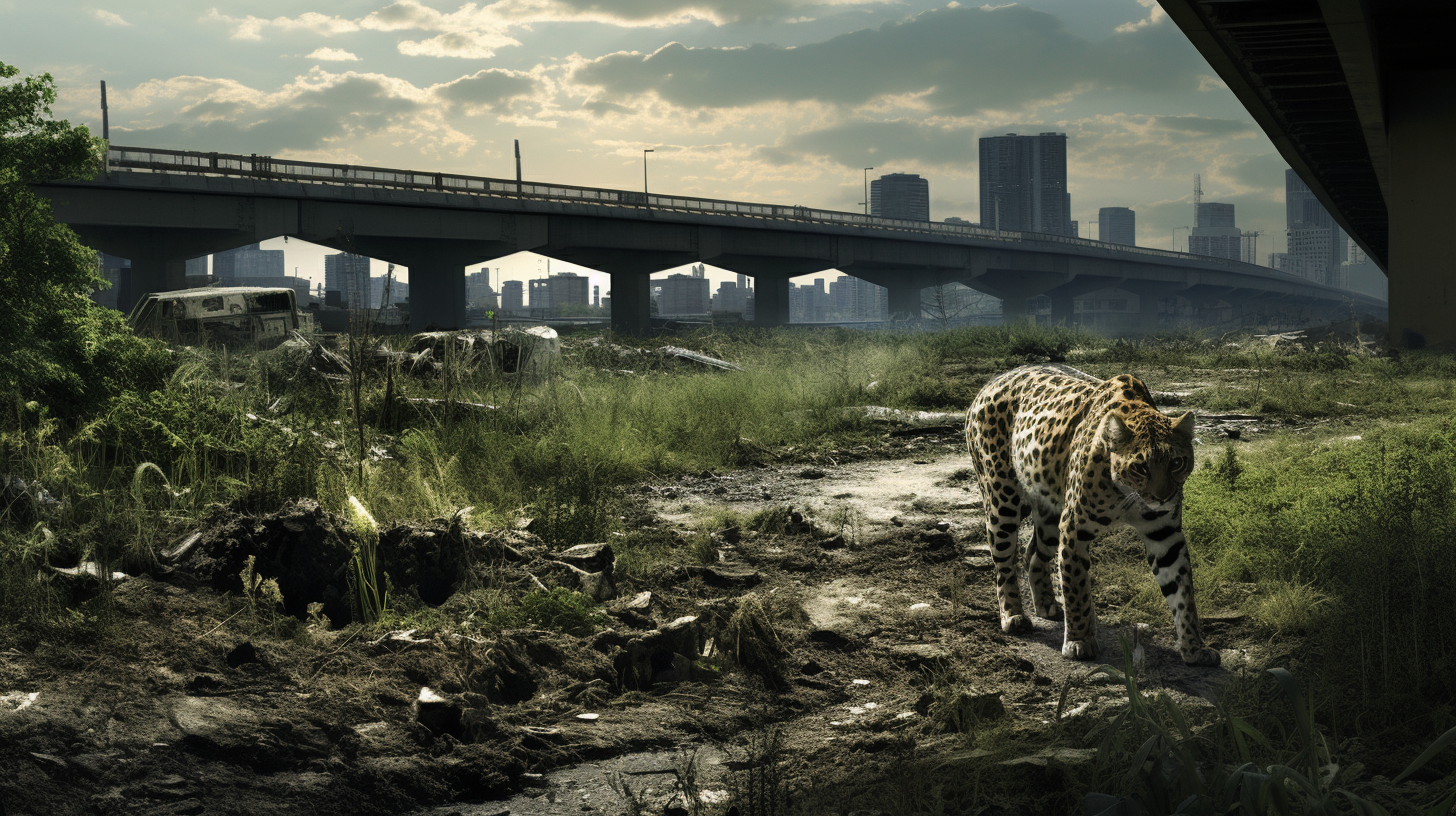Once the bustling arteries of civilization, intertwining the veins of cities with the pulse of commerce and connection, now lie the eerily silent Ghost Highways. Beneath the unnatural quiet, a different kind of life is stirring. In a world where humanity’s grip has slackened, nature reclaims its dominion, turning these deserted asphalt trails into the new frontier for urban wildlife.
Reminiscent of the scenes painted in our last exploration, ‘The Lonesome Road – Journey Through Abandoned Highways’, these skeletal roads bear the scars of abandonment. The occasional faded sign or rusted guardrail serves as the only testament to their past purpose. And yet, there is a sense of irony in these transforming spaces, where despair intertwines with hope—a dystopia giving birth to a utopia for the beasts of the earth.
In the sublime clash of the fall of humanity and the rise of nature, the urban jungle has become literal. Eerily lit by the occasional flickering streetlight or the ethereal glow of bioluminescent fungi, the Ghost Highways have turned into thoroughfares for foxes, deer, and even the occasional prowling cougar. The silence of the ghostly pavements broken only by the whisper of the wind and the conversations of nocturnal escapades.
Daring to navigate these highways is akin to stepping into an alternate reality. One where the steady drum of the yellow-striped roads has been replaced by the thrum of wings and the chatter of the wilderness. There, amidst the crumbled infrastructure and the encroaching brush, new stories are being written by the true survivors of this green dystopia—adventurous wildlife.
Take, for instance, the curious tale of the erstwhile parking lots, now serving as banquet halls for a range of species. Memorials to consumerism transformed into fertile feeding grounds, nourishing everything from the resilient raccoon to the scrappy possum. It’s like observing a fantastical narrative where the animals hold court over the remnants of our own neglect.
Even the most mundane of human artifacts are not immune to this natural reclaiming. Stoplights dangle, not as arbiters of human meticulousness, but as perches for birds of prey. Abandoned vehicles, once symbols of freedom and progress, now nestle unsuspecting plants shooting through dashboards and the backseats—redefining carpooling in the most literal sense.
Biologists and ecologists are watching closely, their interest piqued by the expedient metamorphosis. Studies are underway to comprehend the impact of these new habitats; they chronicle the biodiversity that thrives, and occasionally, they bear witness to the daring reclaiming of long-lost territories by endangered species.
Despite the celebration of life that these Ghost Highways now host, they also present a mute reminder of the brittle fragility of our own existence. For in the grand scale of geological time, these paths of tarmac and concrete will be but a fleeting memory, a brief chapter in the planet’s relentless march. Here, wrapped in the irony of civilizational decay, lies a lesson—the tenaciousness of life prevails, with or without the hand of mankind shaping its course.
They urge the reflective mind to ponder, what will be the legacy of our species? In the grand, diverse tapestry of life, will we be the weavers or the unraveled threads?
As the quiet of the night returns and the wildlife continues its eternal dance, one cannot deny the profound change that has occurred. The Ghost Highways, a symbol of post-apocalyptic rebirth, a somber monument to what once was and what now is—a complex web of life thriving in the crevices of our fading constructs.
These highways are now a hauntingly beautiful mosaic where the human narrative has been muted and a wilder, more resilient story unfolds tirelessly. A story of adaptation and continuation, where the triumph of nature is almost palpable, providing an unlikely beacon of resilience in the otherwise bleak landscape of our green dystopia.
